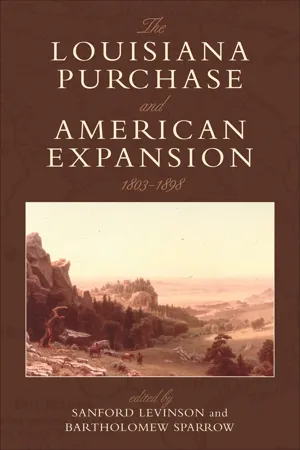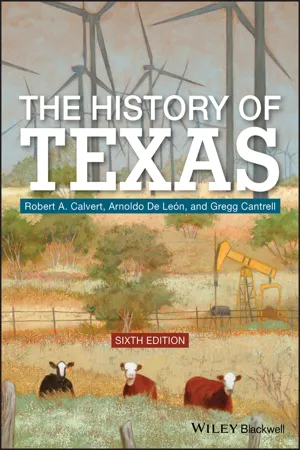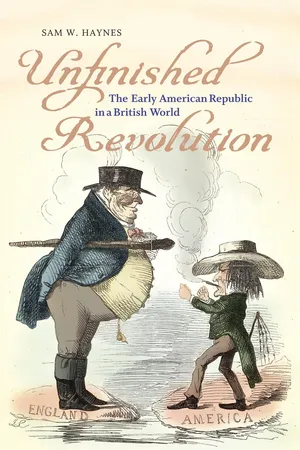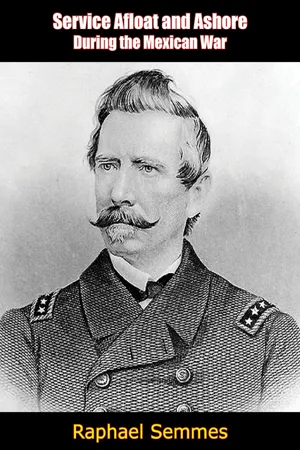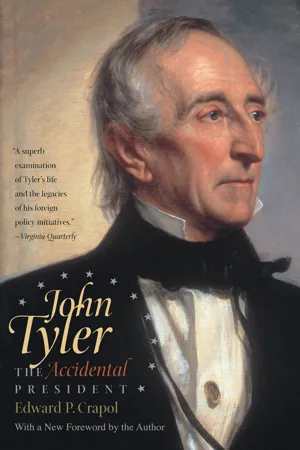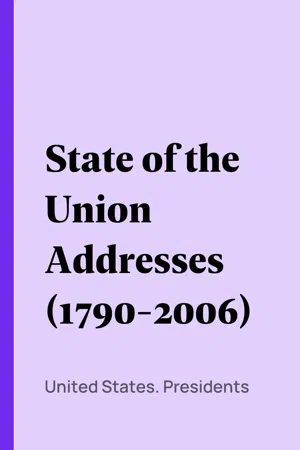History
Texas Annexation
The Texas Annexation refers to the process through which the Republic of Texas became part of the United States in 1845. After gaining independence from Mexico in 1836, Texas sought annexation by the United States, which was initially met with resistance due to concerns over the expansion of slavery. However, Texas eventually joined the Union as the 28th state, leading to tensions with Mexico and contributing to the outbreak of the Mexican-American War.
Written by Perlego with AI-assistance
Related key terms
8 Key excerpts on "Texas Annexation"
- eBook - ePub
The Great American Mosaic
An Exploration of Diversity in Primary Documents [4 volumes]
- Gary Y. Okihiro, Lionel C. Bascom, James E. Seelye Jr., Emily Moberg Robinson, Guadalupe Compeán, Gary Y. Okihiro, Lionel C. Bascom, James E. Seelye Jr., Emily Moberg Robinson, Guadalupe Compeán, Gary Y. Okihiro, Lionel C. Bascom, James E. Seelye Jr., Emily Moberg Robinson, Guadalupe Compeán(Authors)
- 2014(Publication Date)
- Greenwood(Publisher)
Mexican-American WarThe Treaty of Annexation—Texas: A Treaty of Annexation Concluded between the United States and the Republic of Texas(April 12, 1844)The Texas Annexation Treaty, negotiated in 1844, was not approved by the U.S. Congress until February 28, 1845. Most European Americans in Texas favored annexation to the United States, although a substantial number wanted to remain independent. Yet most Texans were southerners by birth, and they wanted unification with the United States. They also felt threatened by the British insistence that they emancipate their slaves. Reproduced here are excerpts from the Treaty of Annexation in which the United States recognized Mexican and Texan land grants and agreed to pay the debts of Texas.ARTICLE IIThe citizens of Texas shall be incorporated into the Union of the United States, maintained and protected in the free enjoyment of their liberty and property and admitted, as soon as may be consistent with the principles of the federal constitution, to the enjoyment of all the rights, privileges and immunities of citizens of the United States.ARTICLE IIIAll titles and claims to real estate, which are valid under the laws of Texas, shall be held to be so by the United States; and measures shall be adopted for the speedy adjudication of all unsettled claims to land, and patents shall be granted to those found to be valid.ARTICLE IVThe public lands hereby ceded shall be subject to the laws regulating the public lands in the other Territories of the United States, as far as they may be applicable; subject, however, to such alterations and changes as Congress may from time to time think proper to make. It is understood between the parties that if, in consequence of the mode in which lands have been surveyed in Texas, or from previous grants or locations, the sixteenth section cannot be applied to the purpose of education, Congress shall make equal provision by grant of land elsewhere. And it is also further understood, that, hereafter, the books, papers and documents of the General Land Office of Texas shall be deposited and kept at such place in Texas as the Congress of the United States shall direct. - Sanford Levinson, Bartholomew Sparrow, Sanford Levinson, Bartholomew Sparrow(Authors)
- 2023(Publication Date)
- Stackpole Books(Publisher)
disclaimer of Texas in 1819 and its annexation in 1845 can be quickly recounted. Mexico rebelled against Spain, and the United States recognized its independence; Texas became part of the Republic of Mexico. Eager for settlers in its vast northern regions, the Mexican government invited immigrants from the United States. As might have been foreseen, it was not long before Texas was dominated by expatriates from this country, and not much longer before Texas rebelled against Mexico and set up as an independent nation. After the usual delay to ensure that the new nation was strong enough to maintain its independence, President Jackson recognized the Republic of Texas in 1837. 12 Even before Texas was recognized as independent, there had been talk of making it a part of the United States. Jackson and Van Buren had squelched such talk as premature; annexation might lead to war with Mexico, which still claimed the rebellious province as its own. 13 Interest in annexation grew, however, especially in the South; for Texas, unlike Mexico, permitted slavery. Expansion, as numerous orators would soon proclaim, was America’s manifest destiny. 14 President Tyler, a Southerner himself, embraced annexation as his next great goal. Daniel Webster, who was loath to see slavery extended, left the cabinet in 1843. To replace him (after Webster’s first successor had died and his second been blown to bits in a freak accident) Tyler turned to that most Southern of Southerners, John C. Calhoun, who promptly made the case for annexation a case for the defense of slavery. 15 Opposition stiffened measurably. Tyler’s annexation treaty, submitted to the Senate in April 1844, failed to garner even a simple majority, let alone the two-thirds approval the Constitution required. 16 The president decided to make an end run around the Constitution: if the Senate would not approve annexation by treaty, perhaps Congress would achieve it in some other manner—for, said Tyler, “the power of Congress is..- eBook - ePub
- Robert A. Calvert, Arnoldo De Leon, Gregg Cantrell(Authors)
- 2020(Publication Date)
- Wiley-Blackwell(Publisher)
5 Statehood, Secession, and Civil War, 1848–1865Annexation marked a milestone in the history of Texas. Freed from any realistic threat of Mexican reconquest, and bolstered by the economic, military, and diplomatic benefits that flowed from American statehood, Texas enjoyed greater latitude to chart its own course. In the years between annexation and the Civil War, the state became more closely aligned with the culture, politics, and economy of the Deep South. Slavery and cotton assumed greater importance, setting the stage for Texas to follow a distinctly Southern path in the decades after the war.Following annexation, Texas remained a magnet for immigrants seeking new beginnings. The first federal census taken in Texas in 1850 revealed that 212,000 persons (including slaves) inhabited the state. This population was ethnically and culturally diverse, but as Table 5.1 on population origins shows, Anglo Americans from the southern United States accounted for more than half of all Texas residents.Actually, the US South provided two different streams of immigrants. People from the Lower South–the states from South Carolina west to Louisiana along the Gulf Coast–clustered in eastern and southeastern Texas. Not surprisingly, this section of the state hosted commercial farms that used slave labor to grow cotton, sugar, and rice. In contrast, inhabitants from the Upper South–the border states separating the Deep South from the North, ranging westward from Virginia to Missouri and Arkansas–gravitated toward the north and north‐central counties of Texas. Most of these people ran family farms, depending less on cotton and more on the production of foodstuffs, primarily corn and wheat.The 1850 census also listed Anglo Texans who had come from states outside the South–some 10,000 of them. The largest number of these persons hailed from the Midwest; fewer had arrived from New England or the mid‐Atlantic states (Table 5.1 - eBook - ePub
The Growth and Collapse of One American Nation: The Early Republic 1790 - 1861
The Early Republic 1790-1861
- Donald J Fraser, Dotti Albertine(Authors)
- 2020(Publication Date)
- Fraser & Associates(Publisher)
HAPTER 12Texas and the Mexican-American War …the re-occupation of Oregon and the re-annexation of Texas at the earliest practicable period are great American measures …—FROM THE DEMOCRATIC PLATFORM OF 1844…as an express and fundamental condition to acquisition of any territory from the Republic of Mexico … neither slavery nor involuntary servitude shall ever exist in any part of said territory …—THE WILMOT PROVISO OF 1846T he divisions between North and South had been managed so far, even though there had been some major disputes, including the battles over Missouri and nullification. Westward expansion was another tension point between North and South, with the addition of new territories tightly balanced between slave and free states, since such additions converted into political power. As we saw in chapter 11 , the abolitionists had placed the morality of slavery back on the national agenda, with political abolitionists making arguments that were beginning to resonate in the North. Each of these threads will come together over the annexation of Texas, lead to war with Mexico, and to a major expansion of the boundaries of the United States. With ever more territory to argue over, sectional politics would begin to spin out of control between 1844 and 1860.Texas Independence
Settlers began to stream into Texas from the American South in 1821. Moses Austin had been granted a large tract of land from the Spanish and permission to colonize the lightly populated Texas frontier. When Moses died unexpectedly, his twenty-eight-year-old son Steven took over the venture. A month after the colonization process began, Mexico achieved independence from Spain, but the new government continued to allow immigrants to settle the land. Trouble began when Mexico banned slavery throughout the country, including in Texas. Yet, those Americans that had brought slaves with them found ways around the ban, and their growing population made it difficult for the Mexican government to exercise any control in Texas. By 1830, Anglos outnumbered Hispanics by two to one, which would grow to ten to one by 1836. Mexican authorities also feared that the United States was eyeing Texas, and so in 1830 they passed a law restricting immigration into the territory.1 - eBook - ePub
Jeffersonian America
The Early American Republic in a British World
- Sam W. Haynes(Author)
- 2010(Publication Date)
- University of Virginia Press(Publisher)
38Meanwhile, support for annexation seemed to be growing steadily as many prominent Democrats sought to develop an expansionist program of their own. Andrew Jackson, always a political force to be reckoned with, even in retirement, came out publicly in favor of “re-annexation” (like many Americans, he insisted that Texas had been acquired under the terms of the 1803 Louisiana Purchase). Bolstering the administration’s claim that Texas under the aegis of Great Britain imperiled the Western states, Jackson argued that a British army on the banks of the Sabine River would be well poised to strike at Louisiana and Arkansas, inciting slaves to revolt against their masters and threatening the entire Mississippi River Valley.39 Perhaps the most imaginative case for annexation was made by Mississippi senator Robert J. Walker, author of a widely influential open letter on the issue published early in 1844. Walker presented a litany of reasons for annexation, but at its core his argument skillfully played upon the Negrophobia and Anglophobia common to Americans of both sections. The growth of slavery in Texas, he argued, should be no less desirable to the North than to the South, for it would relieve the United States of the demographic pressures of an expanding black population. Texas as a state in the union, he predicted, would serve as a safety valve for thousands of slaves who might otherwise migrate to the free states as plantation agriculture receded in the Upper South. If, on the other hand, Texas should be allowed to remain independent, it would soon be overrun by English colonists who would establish a new, antislavery client state of the British empire. Like Jackson, Walker couched his argument in the language of a nation in peril. “Though saturated with blood, and gorged with power,” Walker raged, Britain “yet marches on her course to universal dominion; and here, upon our own borders, Texas is next to be her prey.”40 - eBook - ePub
- Raphael Semmes(Author)
- 2022(Publication Date)
- Braunfell Books(Publisher)
The question of annexation having been discussed in the newspapers long before the act was consummated, the Mexican government took an early opportunity to notify our minister in that country, that it would regard the annexation of Texas as a casus belli. Señor Bocanegra, in a letter to Mr. Waddy Thompson, dated on the 23 rd August, 1843, uses this language:—”And if a party in Texas is now endeavoring to effect its incorporation with the United States, it is from a consciousness of their notorious incapability to form and constitute an independent nation, without their having changed their situation, or acquired any right to separate themselves from their mother country. His excellency, the provincial president, resting on this deep conviction, is obliged to prevent an aggression, unprecedented in the annals of the world, from being consummated; and if it be indispensable for the Mexican nation to seek security for its rights, at the expense of the disasters of war, it will call upon God, and rely on its own efforts for the defense of its just cause.” General Almonte, the Mexican minister in the United States, reiterated this threat a short time afterward, in a letter to Mr. Upshur, secretary of state. He says, “that on sanction being given by the Executive of the United States, to the incorporation of Texas into the United States, he will consider his mission ended; seeing that, as the secretary of state will have learned, the Mexican government is resolved to declare war, as soon as it receives intimation of such an act.” Notwithstanding these declarations on the part of Mexico, on the 12 th of April, 1844, a treaty of annexation was signed between Mr. Calhoun, secretary of state, and Messrs. Vanzandt and Henderson, Texan commissioners. On the 22 nd of the same month, President Tyler submitted this treaty to the senate for ratification - eBook - ePub
- Edward P. Crapol(Author)
- 2012(Publication Date)
- The University of North Carolina Press(Publisher)
Washington Globe , one of the nation’s leading newspapers. Walker’s message to the American people outlined the manifold reasons why the United States should annex Texas by reiterating the arguments made publicly the year before by Thomas Gilmer and more recently by Secretary Upshur. The Walker letter was the last and the most successful of the trial balloons sent up by Tyler’s allies. It quickly was reprinted in pamphlet form and millions of copies were circulated to rally public support for annexation, especially among uncommitted northern Democrats and skeptical fence sitters throughout the country.Senator Walker’s brief for annexation proved to be a multipurpose masterwork of propaganda. He deftly pressed the right buttons in the debate and offered something for everyone. For those who had constitutional or legal qualms about annexation, his advice was simple—“not to worry.” Taking Texas actually would be the reannexation of territory earlier claimed by the United States and unwisely ceded to Spain in the Florida treaty of 1819. “This is no question of the purchase of new territory,” Walker reassured his countrymen, “but of the re-annexation of that which once was all our own. It is not a question of the extension of our limits, but of the restoration of former boundaries.” Also, the senator believed the reannexation of Texas could be accomplished in three possible ways—by treaty, by an act of Congress without a treaty, or by the authority the states had to “annex additional territory with the sanction of Congress.” Senator Walker was confident that all three of his suggested methods of annexation met the requirements of the Constitution.For Americans who worried that bringing Texas into the Union would be too great an extension of territory and thus a threat to the viability of the republic, Walker reminded them of their young nation’s successful historical record of territorial expansion. Similar concerns had been raised about the Louisiana Purchase, concerns Walker believed had been laid to rest by President James Monroe in his 1823 annual message: “It is manifest, that by enlarging the basis of our system, and increasing the number of States, the system itself has been greatly strengthened in both its branches. Consolidation and disunion have thereby been rendered equally impracticable.” - eBook - ePub
- United States. Presidents(Author)
- 2004(Publication Date)
- Perlego(Publisher)
On that day a governor, a lieutenant-governor, and both branches of the legislature will be chosen by the people. The President of Texas is required, immediately after the receipt of official information that the new State has been admitted into our Union by Congress, to convene the legislature, and upon its meeting the existing government will be superseded and the State government organized. Questions deeply interesting to Texas, in common with the other States, the extension of our revenue laws and judicial system over her people and territory, as well as measures of a local character, will claim the early attention of Congress, and therefore upon every principle of republican government she ought to be represented in that body without unnecessary delay. I can not too earnestly recommend prompt action on this important subject. As soon as the act to admit Texas as a State shall be passed the union of the two Republics will be consummated by their own voluntary consent. This accession to our territory has been a bloodless achievement. No arm of force has been raised to produce the result. The sword has had no part in the victory. We have not sought to extend our territorial possessions by conquest, or our republican institutions over a reluctant people. It was the deliberate homage of each people to the great principle of our federative union. If we consider the extent of territory involved in the annexation, its prospective influence on America, the means by which it has been accomplished, springing purely from the choice of the people themselves to share the blessings of our union, the history of the world may be challenged to furnish a parallel. The jurisdiction of the United States, which at the formation of the Federal Constitution was bounded by the St. Marys on the Atlantic, has passed the capes of Florida and been peacefully extended to the Del Norte
Index pages curate the most relevant extracts from our library of academic textbooks. They’ve been created using an in-house natural language model (NLM), each adding context and meaning to key research topics.

